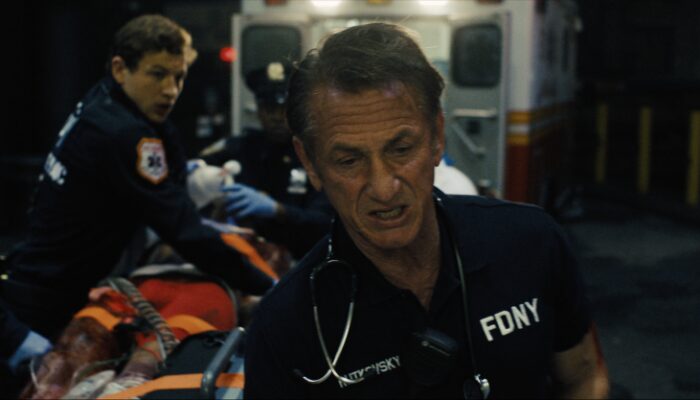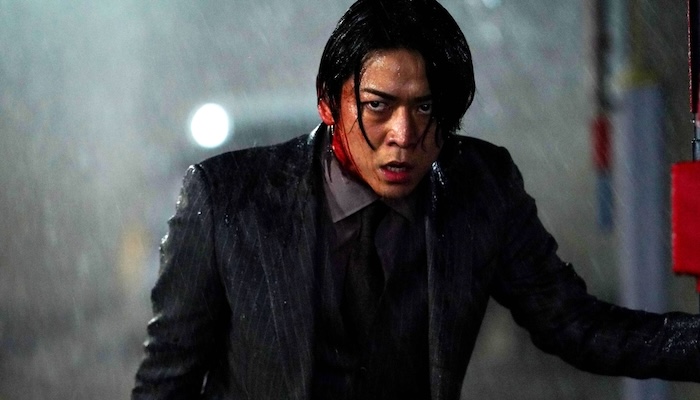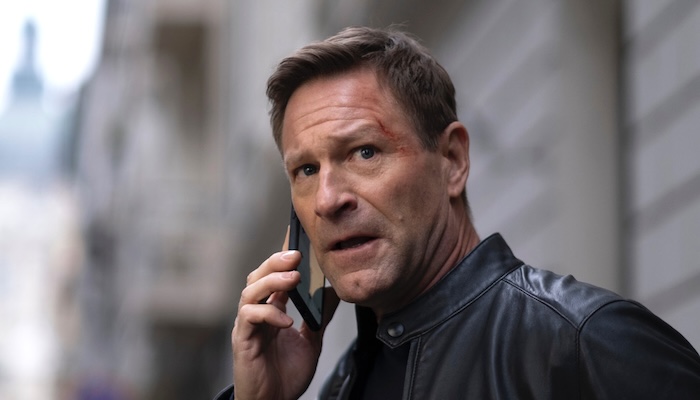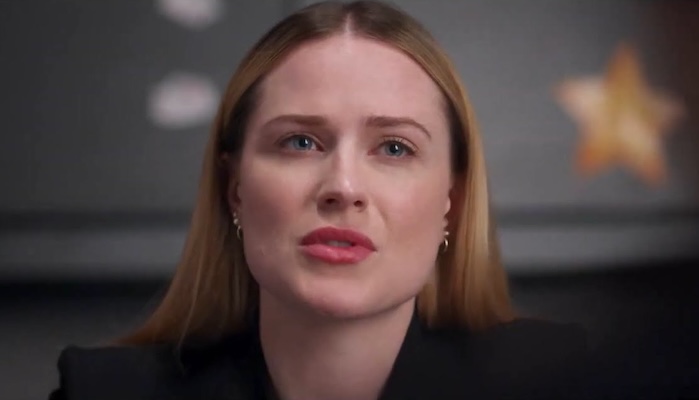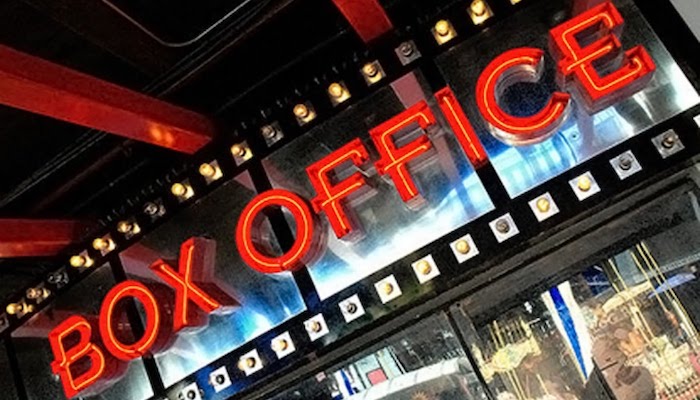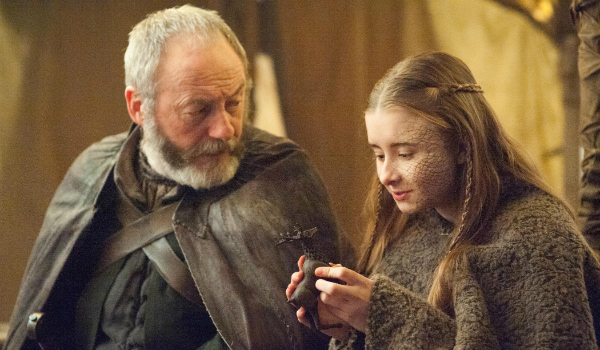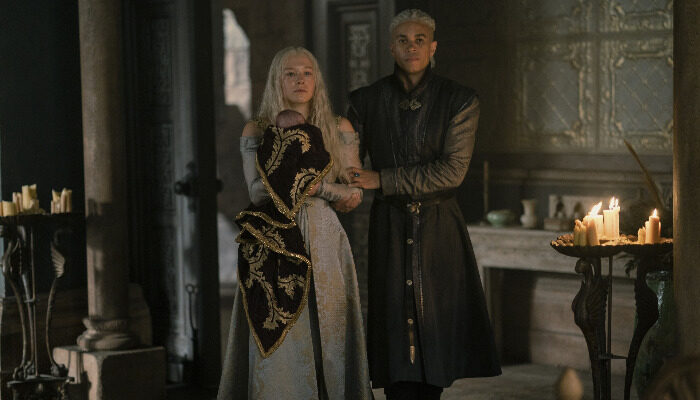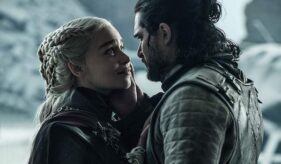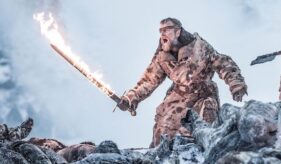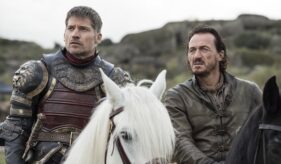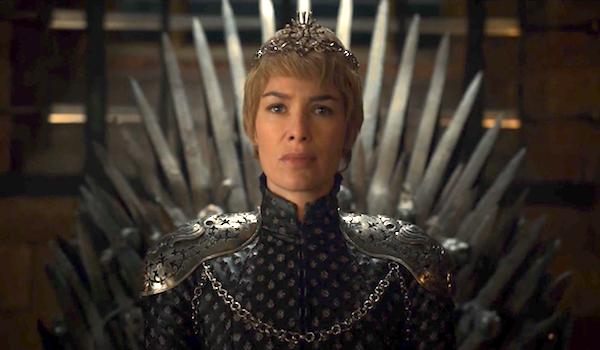TV Review: GAME OF THRONES: Season 5, Episode 9: The Dance of Dragons [HBO]
HBO’s Game of Thrones The Dance of Dragons TV Show Review. Game of Thrones: Season 5, Episode 9: The Dance of Dragons is the penultimate episode of season five. Instead of matching the visual spectacle of last week’s exceptional episode, The Dance of Dragon’s took viewers on a remarkable emotional journey that reached the exhilarating highs and soul crushing lows that Game of Thrones is famous for.
Game of Thrones is the only series on the air that could spend an episode dancing along the precipice of murdering a child and have viewers not even doubt that said child will meet a gruesome end. The Dance of Dragons provided another example of the tension and sense of dread a show can create when an audience accepts that no character is safe from death. As much as we all hoped that Shireen (Kerry Ingram) would escape Melisandre’s (Carice van Houton) sacrifice, once Davos (Liam Cunningham) gave her a gift (the Baratheon doe) we knew she was a goner. Watching Davos and Shireen’s final conversation play out was as difficult to endure as riding on a roller coaster while suffering through a hang over.
Stephen Dillane’s performance as Stannis once again stole the show. Stannis Baratheon is not a man that displays a range of emotions. Despite his noble intentions, Stannis’ religious fanaticism and single-minded concept of right and wrong makes him one of the least endearing characters on Game of Thrones. Stannis’ faith provides him with an unwavering belief that he is destined to become the savior of the Seven Kingdoms and he is unwilling to make any sort of moral compromise as he seeks to accomplish his goal.
Although his expression on the outside is always as frigid as the winds up on the wall, for the duration of his final moments alone with Shireen, Stannis’ eyes betrayed his steely resolve. Dillane’s eyes ran through a gamut of emotions, yet, always returning to the agony that accompanied his conviction. In the end, it was the suffering in the eyes of Stannis that told the audience his faith in Melisandre had doomed Shireen to a horrible fate.
Stannis murdered his daughter because he believed that it would stack the odds of winning the war with the Boltons in his favour. Any television shows that dared to ask an audience to partake in the heavy emotional tolls Game of Thrones viewers endure, would certainly reward the story’s bleakness with good people coming out on top every now and then. When a favorite character suffers a defeat on Game of Thrones, their redemption is never a safe bet. Most television shows delicately balance optimism and pessimism like two children going up and down on opposite ends of a see-saw. On Game of Thrones, pessimism is a 500 pound gorilla that crashes down upon his end of the see-saw, catapulting optimism into the air and right out of the playground. If the series doesn’t find a more balanced approach between representing hope and despair, many of the show’s fans will not be around by the time season seven arrives.
Going into the season’s final episode, the odds for success are stacked in Stannis’s favour. Right now, the best case scenario in the north is that Stannis overthrows the villainous Boltons and awards Jon Snow (Kit Harrington) the right to conscript an army to join The Night’s Watch. Stannis is the only person south of the wall taking the walker threat seriously, and after the destruction that took place last week in Hardhome, we know that there is no chance that The Night’s Watch as it is currently constructed can stop the walker army. The Seven Kingdoms are unprepared for the walker invasion and without reinforcements at the wall, the walkers will have unimpeded access into the south.
The underdeveloped plotline in Dorne continues to be one of the weakest aspects of season five. The Dance of Dragons did what it could to fix the elements that were not working (underdeveloped characters and the feeling of low stakes) but the attempts came across as too little too late. The slap fight between the two Sandsnakes added a bit of nuance to two of Oberyn’s daughters, providing more character development in two minutes than they received in the previous 8 episodes. Prince Doran (Alexander Siddig) proved to be more pragmatist than coward, and one of the more sensible men in the world of Game of Thrones. Ellaria’s (Indira Varma) conversation with Jaime (Nikolaj Coster-Waldau) hinted that she was not behind the threat on Myrcella (Nell Tiger Free), leading Jaime to further question the motivations of his nefarious sister. Prince Trystane (Toby Sebastian) is as interesting onscreen as staring at a system update on my laptop. Shipping Trystane off to live amongst the treachery in King’s Landing should at the very least set up some engaging plot threads for season 6. The writer’s attempt to fix the Dorne plot in episode 9 is the equivalent of jumping out of a plane and waiting too long to pull the chord on a parachute. The skydiver will hit the ground hard and break a lot of bones, but at least he didn’t end up a splatter on the pavement.
Game of Thrones has developed a terrible habit of characters coincidentally running into each other. Westeros and Essos are so large that it is insane to believe that characters would accidentally cross paths so frequently. There are better ways to have Arya (Maisie Williams) run across the people on her kill list than to have her randomly walk by one of them on a Braavosi dock while she sells clams. I’m amused by how high up on the villain scale the show decided to place Meryn Trant (Ian Beattie). It’s fun watching him as he walks around sporting the type of sneer worn on the faces of silent film villains who tie damsels to train tracks. He also happens to be a pedophile. The audience is already on Arya’s side, Game of Thrones painting Meryn Trant as an uber-villain is just overkill.
As the episode turned to the coliseum in Meereen, the conversation amidst Daenery’s (Emilia Clarke) small counsel was significant as it provided another example of Game of Thrones writer’s flirting with the concept of there being a “better way”. For the characters on the show, a better way implies breaking from thousands of years of tyrannical oppression. For viewers, a better way would mean the show breaking from its oppressive cynicism. A better way means offering fun, dazzling and inspiring onscreen moments that don’t come shackled to misanthropic caveats.
Tyrion’s (Peter Dinklage) snide remark to Hizdahr (Joel Fry) regarding Tywin’s similar approval of legacies is a sign that he and Daenerys are on a mission to obliterate the world’s endemic oppression. I want to believe that the final two seasons of Game of Thrones will have me pumping my fist in the air more often than I turn away from my television and cringe. I believe Tyrion’s remarks are an indication that there are better things to come – perhaps it’s my Game of Thrones Stockholme syndrome getting the better of me.
The title of the episode is The Dance of Dragons, and the show delivered on its promise. The reunion of Daenerys and Drogon was one of the series most powerful moments. On television, Game of Thrones budget and sense of scale remains unmatched. Last week’s episode, Hardhome, proved the show can produce action set pieces that rival what we see in blockbuster films. However, one area where Game of Thrones does not receive enough credit is for the unparalleled narrative depth it plunges into when it brings together five years worth of disparate plots and characters. How many series can afford to take several years to allow their storylines to coalesce?
Game of Thrones is at its best when it unites its divergent plots, rich history and delivers the spectacular moments the show has spent multiple seasons hinting at. Several years ago, we watched as dragon eggs turned into hatchlings. Then, over multiple seasons we saw hatchlings evolve into the dragon equivalent of rebellious teenagers. Over nine episodes this season, we looked on as Daenerys fell into the role of a clueless mother that lost control and became terrified of her own children.
In The Dance of Dragon’s closing moments, we saw Daenerys, Tyrion and Jorah (Ian Glenn) trapped in the center of the coliseum, their loyal soldiers decimated by the Sons of the Harpy and each beloved character slowly accepting that there was no chance of escaping with their lives. The dramatic return of Drogon was not only the climactic moment of the episode, it was also a climactic moment that was five years in the making. When Daenerys climbed upon her dragon’s back, a five-year emotional investment finally paid off. No other show waits so long to play such a strong hand. Just like Daenerys atop Drogon’s back, Game of Thrones viewers need to enjoy the ride, because they won’t experience a show this patient, thrilling and powerful again anytime soon.
Leave your thoughts on this review and this episode of Game of Thrones below in the comments section. For more Game of Thrones photos, videos, and reviews, visit our Game of Thrones Page, our Game of Thrones Google+ Page, our Game of Thrones Twitter Page, subscribe to us by Email, “follow” us on Twitter, Tumblr, Google+, or “like” us on Facebook for quick updates.
Related Articles
FilmBook's Newsletter
Subscribe to FilmBook’s Daily Newsletter for the latest news!


